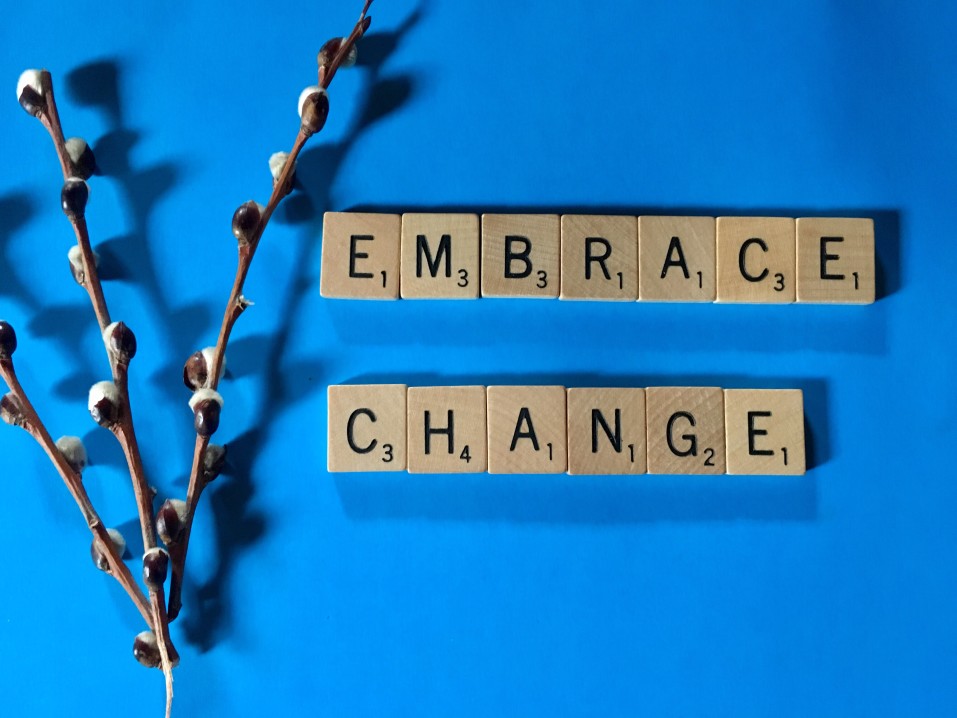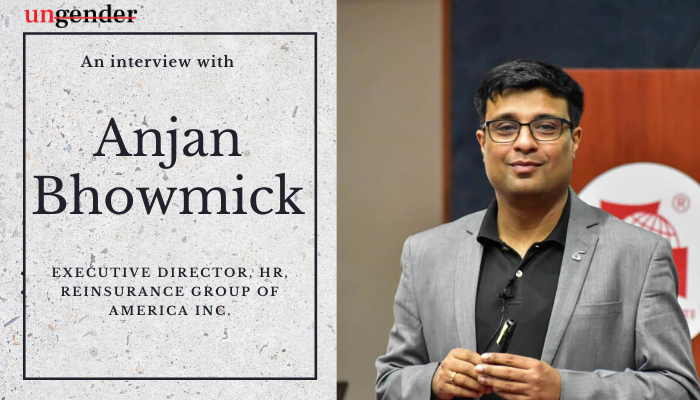‘AQ, The New Mantra For Leadership Success,’ Says Anjan Bhowmick, Executive Director, HR, RGA Inc.

By Rituparna Chatterjee:
A major process of how companies function, is dependent on the ethos of the people running it at the top. With a decade of churn in the way diversity and inclusion is assimilated and viewed, especially in Asian economies, companies are scrambling to streamline their D&I strategies to contribute to an innovative culture that generates ideas that can enhance efficiency by involving stakeholders from various sections of the society. This is among the many things we discussed with Anjan Bhowmick, w
ho currently works with the Reinsurance Group of America, Incorporated (RGA) as Executive Director, Talent and OD for Asia and Australia markets.
RGA is among the leading global providers of life reinsurance and financial solutions, with approximately $3.5 trillion of life reinsurance in force and assets of $76.7 billion and ranks 225 on the 2020 Fortune 500 List.


***
Q: Can you tell us in brief as to where you work and what does your work entail?
A: My work entails application of behavioural science to improve efficiency and productivity of the Organisation. The role enhances both the effectiveness of an organisation and the wellbeing of its members through planned and targeted interventions at enterprise, team and individual level. I keep myself updated on recent developments of Business Strategy and HR by experiencing different business cycles of firms and participating in change or transformational agendas.
Q: What do you think are the building blocks that make a company’s culture?
A: Culture building varies from firm to firm, so there is no ‘one size fits all’. Personally, I don’t think culture should be cast in stone. What is uniform is a standard set of values which stands a test of time. The culture of a company has recently seemed to be influenced by business cycles that companies undergo, the customers they service and the people that she represents. For example, RGA, which is predominantly in the risk management business typically looks at culture that has three dimensions. What is my current company culture versus the standard set of values?
How is it changing over a period given the internal and external shift that we are experiencing? Also, what do I need to do to ensure we drive this culture across local markets or in some homogeneous markets allow them to drive their local culture?
To summarise, the building blocks of culture would typically vary at this point of time for different businesses and different business cycles, unlike 20 years ago when culture was expected to be predominantly standardised.
Q: Isn’t culture also top-down flowing? For example, wouldn’t Tata’s work culture be influenced by Ratan Tata’s leadership? How much of culture can be attributed to the leadership at the top?
A: Leadership, 10 years back is very different from the leadership today. Culture is an important dimension of leadership and I think even the leadership definitions are changing. Even in case of the Tatas, a significant portion of their investment pie is focused on encouraging new businesses and fostering entrepreneurship. According to a recent work by McKinsey, AQ (Adaptive Quotient) in addition to IQ and EQ is now a new mantra for leadership success.
A lot of work is going on “how do I look at leadership from a prism of an AQ”. If Ratan Tata does not belong to this concept of Adaptability Quotient, which is significant for his business, chances of him sustaining that business would be difficult. The way Ratan Tata manages a TCS is different from the way he manages Tata Steel. Therefore, the short answer would be yes, it’s driven by leadership. But leadership itself is undergoing a steep change, which defines how culture would be but that’s just one aspect of culture. To me, I think nowadays, culture is defined by the customers you work with to create value, the ‘Outside In’ approach.
Q: What was the thought behind the transition (to D&I) and not any other vertical under HRM? What made this role special to you?
A: D&I is one of the critical OD interventions that we are currently driving in Asia. RGA strongly believes across the organisation that diversity of thought-action-belief are key tenets to becoming an agile and progressive organisation. The same fosters an innovative culture through inclusion of ideas and exclusion of group think. Our businesses constantly innovate and reinvent themselves to stay ahead of the curve to generate value for customers. I think, more broadly, D&I needs to be looked at from this prism.
Q: You’ve been in the industry for close to two decades now. How has the conversation around diversity and inclusion changed and evolved over the past decade? What are the same major highlights you witnessed?
A: Firstly, D&I as a concept is not very old, and organisations are largely progressing gradually in generating real value. Focused attention on the concept is as recent as 10 years ago. Was it there before? “Yes”. But were firms conscious about the fact that you need to progress that “Probably not”. Some firms took incremental steps, but the general corporate world woke up to this rather recently.
Secondly, around ways of attending to D&I practices. The issues that I see in Asia are different from the issues that I see in the US, for that matter, even Europe. In Asia, I see a lot of discussion around gender, around diversity of thought, typically because the Asian cultures like the Japanese and the Koreans are not very vocal. The narrative totally changes when you cross the borders across the ocean in North America where there the discussion is around ethnicity and colour. So, the narrative differs by markets and one needs to cognise for it and not take a carte blanche approach.
Thirdly, D&I agenda should substantiate or yield value to the enterprise and this may not always be in terms of cost and revenue. It should contribute to an innovative culture in terms of generating more ideas and it should enhance efficiency by involving stakeholders from various sections of the society. I see this realisation gradually being adopted.
Fourthly, we see a greater deal of segmentation of D&I at a firm level, at a work group level and at an immediate supervisory level being discussed. This is bringing more focus to this area and D&I champions can produce meaningful insights from the diagnostics in these 3 aspects.
Q: Where is the gap between how companies are changing and the conversations that are happening, viz-viz the ground reality?
A: Very clear gaps! The data on mid and large sized companies clearly indicates greater sponsorship and commitment in D&I. This is a positive sign. The gap is when the intent does not translate into execution. Leaders not ‘walking the talk’. And they are not walking the talk is because they don’t have D&I as the top three things they want to spend their time and resources. Most often, D&I related activities get delegated and thus loses focus. I think the leaders need to be a little more conscious. They, need to have more discussions on and around D&I. It’s not that one good discussion in an year, “yes, we need to do it , we stand for this and you write three principles and have a vision and then forget about it.” I think it has to be sustained through. So that’s a gap.
D&I needs to be embedded in the existing management systems. More firms regard D&I as a separate body. Personally, I feel in order to make this sustainable it should fall along with the day to day routine of companies. It will then become a way of life.
Q: For someone who is entering a D&I role as their primary role in an organisation, what according to you are the things that need to be kept in mind?
A: Here is how we could think this through – I call it a ‘D&I Value Chain’. The first part of the value chain is ‘creating awareness’. Now whether you want to do it for one year or two years or three years is your own decision. The second part is to “create and generate conversations amongst relevant stakeholders”. That’s the second dimension of the value chain. The third dimension of the value chain is to then start “creating measures around D&I”. Then, having generated those matrices and aligned that with business, leaders start “reviewing progress”.
This is a linear model and the chain must be followed chronologically. All of the abovementioned elements of the value chain should have a strong grounding of diagnostic.
People typically jump the first two steps and initiate the measurement and review process right from the beginning. One should refrain from embedding D&I questions in engagement survey tools right from the start. It is critical to invest in generating awareness and having focused conversations with stakeholders before putting measuring and reviewing mechanisms. My recommendation would be to spend at least 2-3 years doing the first 2 steps and before the dashboards.
Q: There’s a, this is a common thought and especially in the Indian context, various companies think that as long as they have diversity of thought of various other competences like gender, race, age, other forms of diversity does not matter. What do you think about that?
A: I think it’s a very interesting question. My thought about it is “diversity of thought” is a very critical and essential ingredient. We can’t run away from the fact that diversity of thought needs to happen and therefore, we need to recruit the right talent to embed diversity in our talent acquisition strategy and leadership development work we do. I think diversity of thought should be followed by diversity in action. Does that thought really translate into observable behaviours or actions on the ground to bring the desired values to the company.
Q: Take the example of media where there’s distinct ageism. So while your company can, you know, respect diversity of thought, they are more and more tapping into a workforce that is young.
A: It substantiates what we are discussing. Diversity of thought is the starting point. How do I translate that into observable behaviours, policies or actions in the company? I might have great intent around equality of views and opinion, however, not being able to visualise the same would be value destroying? Thoughts and intent should manifest into action, and that is what we say that leaders need to ‘walk the talk” to yield organisation value. How do I create that value only at the thought level is the introspection we need to do?
Q: Share your thoughts on the need for continuous knowledge update for HR and D&I professionals that needs emphasis for the growing industry as it lacks dedicated domain expertise
A: HR should have the ability and ammunition to advise Boards, Senior Managers or Sponsors around executing and operationalising D&I. I don’t think they need to spend time ‘selling’ the idea, which I think is already established globally. it must be diversity and inclusion in action and not on an esoteric level. That’s the first thing. I think the competency device is an operating plan to show the business that it’s developing or creating value? The business will not spend five man-hours a week on this topic if it is not generating value.
Personally, when I started off advising my CEOs and General Managers on this subject, I had to really do a lot of reading, talk to a lot of people around, study best practices and coin a concept around it which would resonate with the company. It’s not that we have 100 years of history around this subject.
The other area is to provide a longish horizon to D&I and then start breaking it down. D&I is about assessing your current culture and in all probabilities introducing a new mindset. Value creating take time. This is not an ATM machine that you go to, put a card and cash comes out instantly. Build a three to five-year plan, and not a one-year plan. My advice would be to visualise and present a roadmap using the elements of the Value Chain I mentioned earlier for a sustained result.
About the author: Rituparna Chatterjee is a journalist with close to two decades of experience in journalism, working across media platforms, and tracking ground-up stories of feminist movements, social inequalities, gaps in gender discourse, and communities. She currently oversees communications for Ungender Legal Advisory
Ungender Insights is the product of our learning from advisory work at Ungender. Our team specializes in advising workplaces on workplace diversity and inclusion. Write to us at contact@ungender.in to understand how we can partner with your organization to build a more inclusive workplace.
Read our insights about diversity, legal updates and industry knowledge on workplace inclusion at Ungender Insights. Visit our Blog.
Sign up to stay up-to-date with our free e-mail newsletter.
The above insights are a product of our learning from our advisory work at Ungender. Our Team specialises in advising workplaces on gender centric laws.
or email us at contact@ungender.in




